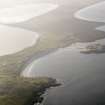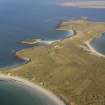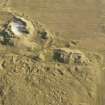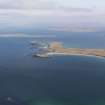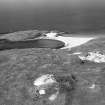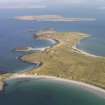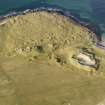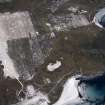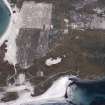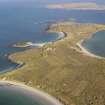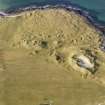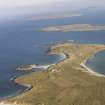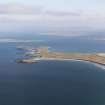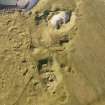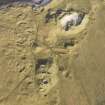Pricing Change
New pricing for orders of material from this site will come into place shortly. Charges for supply of digital images, digitisation on demand, prints and licensing will be altered.
Upcoming Maintenance
Please be advised that this website will undergo scheduled maintenance on the following dates:
Thursday, 9 January: 11:00 AM - 3:00 PM
Thursday, 23 January: 11:00 AM - 3:00 PM
Thursday, 30 January: 11:00 AM - 3:00 PM
During these times, some functionality such as image purchasing may be temporarily unavailable. We apologise for any inconvenience this may cause.
North Uist, Coileagan An Udail
Cairn(S) (Prehistoric)(Possible), Cist(S) (Prehistoric), Cist (Early Bronze Age), Inhumation (Early Bronze Age), Midden(S) (Prehistoric), Settlement (Prehistoric), Wheelhouse(S) (Iron Age), Unidentified Pottery (Roman), Unidentified Pottery (Prehistoric)
Site Name North Uist, Coileagan An Udail
Classification Cairn(S) (Prehistoric)(Possible), Cist(S) (Prehistoric), Cist (Early Bronze Age), Inhumation (Early Bronze Age), Midden(S) (Prehistoric), Settlement (Prehistoric), Wheelhouse(S) (Iron Age), Unidentified Pottery (Roman), Unidentified Pottery (Prehistoric)
Alternative Name(s) The Udal
Canmore ID 10319
Site Number NF87NW 1
NGR NF 8242 7843
Datum OSGB36 - NGR
Permalink http://canmore.org.uk/site/10319
- Council Western Isles
- Parish North Uist
- Former Region Western Isles Islands Area
- Former District Western Isles
- Former County Inverness-shire
NF87NW 1 8242 7843.
(NF 8242 7843) '... a ritual complex, of an orthostatic circle with associated cists amounting to a graveyard clearly extending well beyond the limits of this excavation,' was partially explored in 1964. It lies some 400ft due NW of the main mediaeval settlement at Udal (NF87NW 2). The complex appears to have been systematically robbed (so far as excavated at present) by the depositors of a large midden heap which abutts on to the ritual enclosure. Pottery fragments and the structures themselves indicate a Bronze-to-Iron Age dating. Excavation was abandoned as the discovery did not relate directly to the mediaeval settlement.
I A Crawford 1964.
Further evidence, but not yet conclusive, indicates a Neolithic-Iron Age burial complex.
Information in telecommunication from I A Crawford (School of Scottish Studies) to OS.
Field Visit (17 August 1914)
Earth-houses (ruined), Udal.
Amongst the sand dunes on the western side of the peninsula extending north-east from Sollas, at Udal about 2 ½ miles north of Sollas, are four large sand dunes, the slopes of which are covered with kitchen midden refuse, consisting of shells, animal bones and fragments of hand-made pottery. At different places on the slopes are quantities of stones, dislodged by wind denudation, apparently the ruins of earth-houses. On the north-western slope of the most northerly mound the only building traceable is a curved section of the foundation of a wall with two other walls running inwards some 6 feet towards the centre, forming the outer part of a chamber 9 feet wide at the exterior end and narrowing towards the interior. About 30 feet to the east there is a considerable quantity of iron slag amongst the fallen stones. On the south side of the mound a length of 8 feet of a curved wall is exposed, and near this were found a piece of flint and part of an axe of red sandstone used as a hammer stone, with slight parallel grooves on one side, apparently made by sharpening pins. Other relics on Fig. 149.
About 40 yards to the south is the second mound at the west side, where amongst fallen stones the curve of a wall measuring 24 feet across the chord, apparently with a curved entrance passage 2 feet 4 inches wide and traceable for some 6 feet, is visible.
The third mound lies about 50 yards southwest of the last, and shows a large quantity of fallen stones on the western slope. To the north-west a section of curved walling 6 feetlong and 3 feet high, with a short length of a radial wall running into the sandhill, is noticeable. To the south of this on the western side the earth-house partly excavated some years ago still remains in view. Though much of the building has fallen, the S-shaped entrance and part of the wall on either side of its inner end can be traced. On the south side of the hill is the southern arc of a curved wall showing a diameter of 38 feet.
On the fourth and most westerly hill the southern slope shows many displaced stones, the only part in position being on the southwest, where a small portion of a curved wall is visible. Some of the kitchen midden deposits measure up to 1 foot in thickness and are evidently of later date than the earth-houses, as in places they overlap the buildings.
RCAHMS 1928, visited 17 August 1914.
North Uist xxx (unnoted).
Publication Account (2007)
NF87 6 THE UDAL (‘Coileagean an Udail’)
NF/824783
These are four aisled wheelhouses, probably dug-out, in North Uist [7, 232-3]. They appear to have been built into a slope and therefore to have been partly dug-out and partly free-standing. The site at Udal is one of the most remarkable in north-west Europe and consists of several mounds containing structure and occupation layers spanning the last three or four millennia. It was excavated for many years in the 1960s, 1970s and 1980s by Iain Crawford but full details of the discoveries are not available yet, and several interim reports have to be relied on.
Judging from the small scale plan available [7, 122] three of the wheelhouses at Udal form a fairly tight cluster, like Foshigarry (NF77 6). Some further architectural details can be gleaned from Crawford’s comments and table [7]. Four C-14 dates are listed in his table of dates [7, Table 15] and they all fall into the first and second centuries AD. A piece of 3rd century Roman pot in a late wheelhouse context was also found [7, Table 17].
Sources: 1. NMRS site no. NF 87 NW 1 and 2: 2. RCAHMS 1928, 273, no. 89: 3. Crawford 1965: 4. Crawford 1966: 5. Discovery and Excavation in Scotland, 1966, 29: 6. Armit 1992, 51-2: 7. Crawford 2002.
E W MacKie 2007
Note (2020)
Udal
This burial site in Western Isles was a focus for funerary practices in the Bronze Age period, between 2200 BC and 1501 BC.
Prehistoric Grave Goods project site ID: 60055
CANMORE ID: 10319
Total no. graves with grave goods: 1
Total no. people with grave goods: 1
Total no. grave goods: 1
Prehistoric Grave Goods project Grave ID: 60024
Grave type: Cist
Burial type(s): Inhumation
Grave good: Pot
Materials used: Pottery
Current museum location: Unknown
Further details, the full project database and downloads of project publications can be found here: https://doi.org/10.5284/1052206
An accessible visualisation of the database can be found here: http://blogs.reading.ac.uk/grave-goods/map/






























